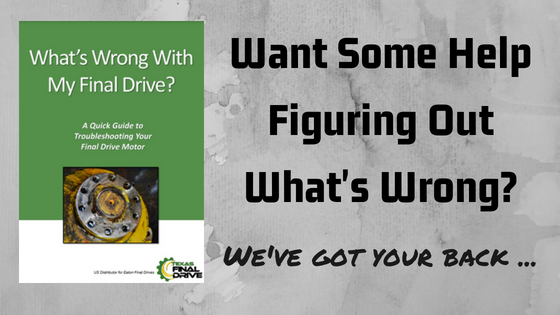In this Shop Talk Blog post, our focus will be on premature bearing failure on the planetary side of your final drive motor -- what causes it, and how to prevent it!
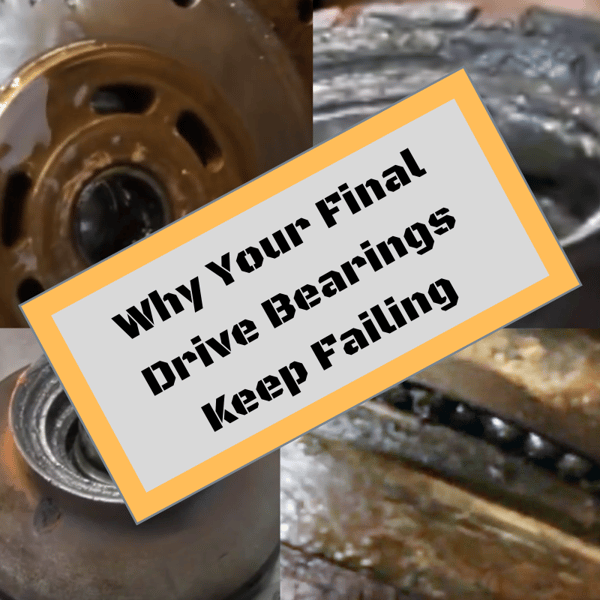
Here are a few other blog posts you might find interesting:
- Final Drive Motor Bearings
- 4 Key Maintenance Tasks for Final Drives
- How to Troubleshoot Gear Oil Problems
Premature Bearing Failure
The number one cause of premature bearing in a final drive lies in lubrication. In fact, there are three reasons why bearings repeatedly fail, and they all involve lubrication. If we focus on the planetary side of your final drive, they are ...
- Failure to check the gear oil levels on a regular basis
- Failure to change out the gear oil on a regular basis
- Using gear oil that is full of contamination
Let's discuss each of these.
Gear Oil Levels
You should be checking the gear oil levels on your final drives about once every 100 hours of operation. If the levels are low, it needs to be topped with fresh gear oil of the same type. And if you have to top it off repeatedly, then you've got a leaking seal.
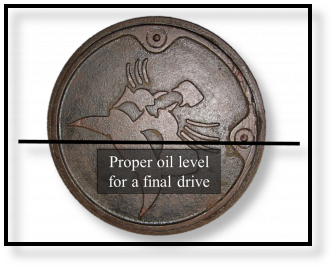
For a Bobcat final drive, this is what the appropriate gear oil level should be. If you see metal slivers on the gear oil plugs when you pull them, that's a bad sign of generated contamination.
When the gear oil levels run too, the bearings don't have enough lubrication to run smoothly. In anti-friction bearings, the balls, cylinders, or needles in the bearings will start grinding against the races. In sleeve bearings, the same thing happens: metal comes into direct contact with metal. That direct contact between metal surfaces leads to higher friction, surface damage, and greatly accelerated wear. With enough time, it also leads to catastrophic bearing failure.
Changing Out Gear Oil
The gear oil in your final drive motor needs to be changed out about once a year -- and that means completely drained and replaced, not just topped off.
Gear oil is going to age over time, with the critical chemicals and additives in the gear oil eventually breaking down. When that happens, the gear oil will begin to thicken (sometimes into a pudding-like consistency), develop a very bad smell, and be absolutely useless. The results are accelerated wear of your bearings and premature bearing failure.
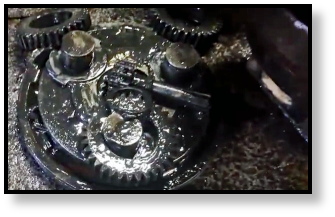
This is an example of old gear oil that hasn't been changed in ages.
Contaminated Gear Oil
Gear oil can get contaminated with water, dirt, dust, sand, and metal shavings. Metal shavings are usually the result of wear caused by issues with lubrication. Contamination also leads to premature bearing failure.
If you see shiny particles in your gear oil, that is a serious sign of damage caused by metal-to-metal contact. And lubrication is supposed to be preventing that metal-to-metal contact, especially in bearings.
When seals begin to fail, they not only let gear oil out but let in abrasive particles and water. Water can lead to corrosion of the components inside the planetary hub, including your bearings. And those abrasive particles can get caught between the bearing balls or needs, leading to accelerated wear and eventual failure.
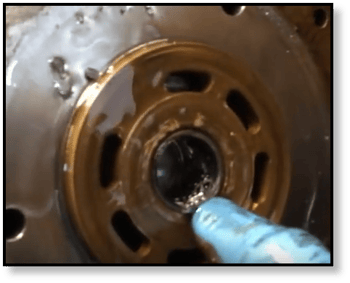
When a bearing fails, it causes serious problems for the other components in your final drive motor.
Preventing Bearing Failure
While it is true that your bearings will eventually wear out, they are supposed to have a long service life. If you find yourself repeatedly replacing the bearings in the planetary hub of your final drive motors, that most often points to issues with lubrication. To prevent premature bearing failure, we recommend following this type of maintenance plan:
- Check the gear oil levels once every 100 hours of operation
- Change the gear oil out once a year
- Make sure you are using the right kind of gear oil for your final drive
- Replace leaking seals
Following these steps will prolong the useful life of your bearings and prevent catastrophic damage to your final drive.
Conclusion
We encourage you to take the steps necessary to prolong the life of the bearings on the planetary side of your final drive motor. Failure to do so can lead to catastrophic failure, very expensive repairs, and costly downtime.


